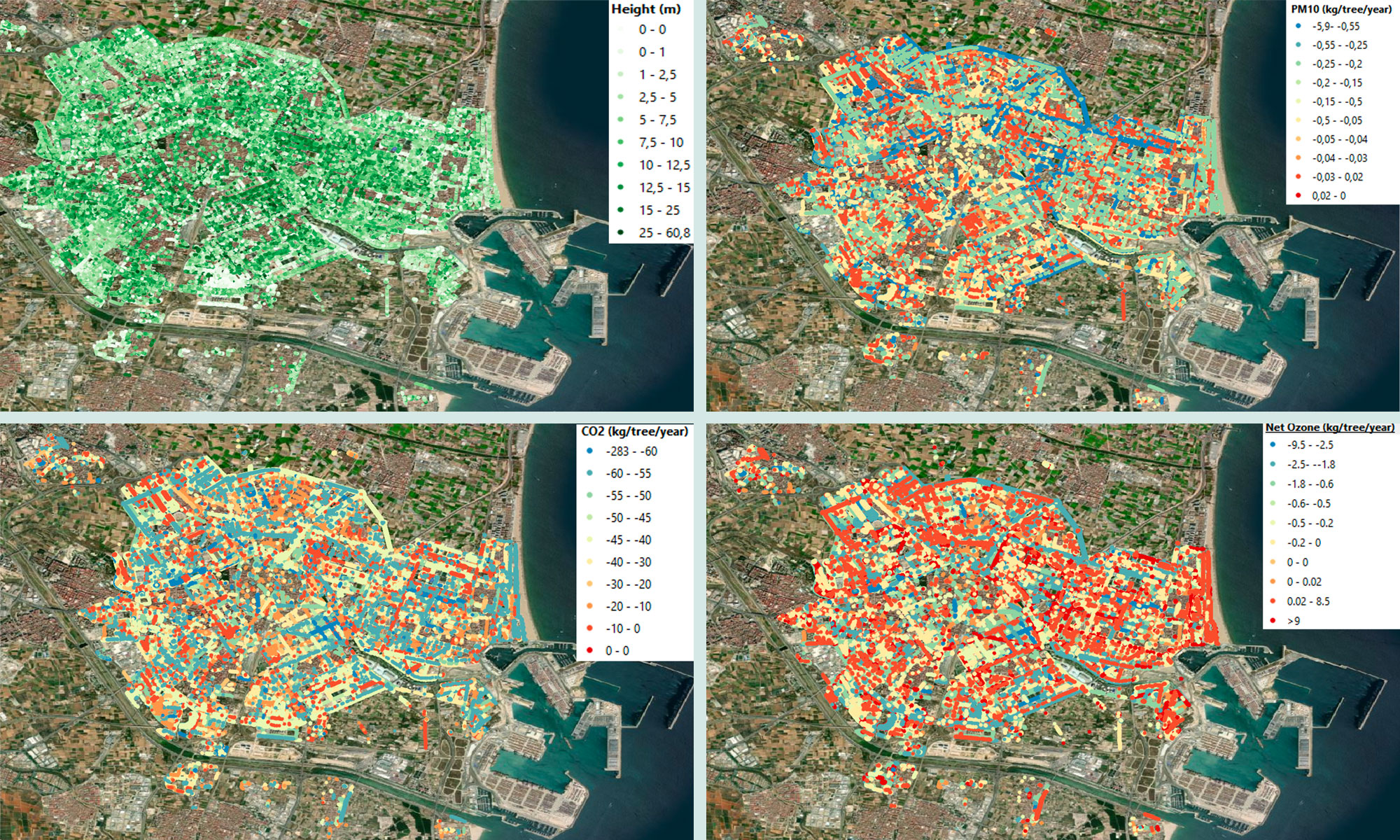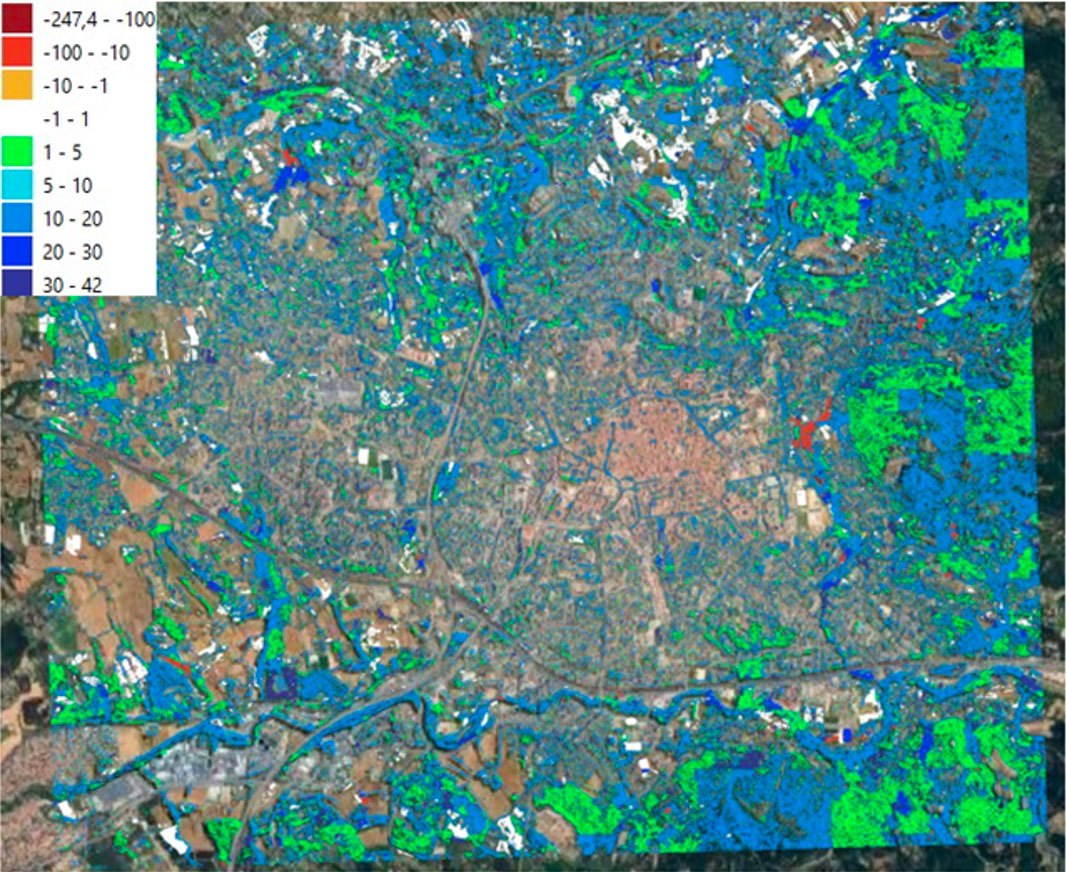GreenSpace unveils first results for Valence study case
|
In February 2024, the SCO GreenSpace project, led by ACRI-ST, explained the importance of choosing carefully trees species. In mid-November 2024, the project presented its progress in two pilot cities, Valencia (Spain) and Bucharest (Romania), revealing some surprising statistics. In a different climate, air quality in Valencia is particularly affected by ozone, while in Bucharest the main threat is fine particles. |
Project memoGreenSpace : |
Results in Valencia
In the Spanish city, GreenSpace allowed detecting and classifying 146,445 adult trees (302 different species). The dominant species are citrus, plane, palm, hackberry, pine and maple. Considering the specific removal capacity of each tree species, the project was able to draw up positive or negative removal maps for the main greenhouse gases and air pollutants (see opening mosaic image).
👉The final balance for the whole city is positive except for ozone, due to many palm trees that generated more ozone than they absorbed.
👉Another unique feature of this project is that GreenSpace has produced a list of recommended plant species for planting, in which several maple species stand out. The list takes into account, first and foremost, the removal capacity of trees (which, for the same species, varies depending on the climate) but also a number of other factors such as resilience to climate change, tolerance to pest and diseases and the emission of allergenic pollens.
|
▲ Ozone removal capacity (in g/m2 /year) of Valencia's trees: in blue, they absorb a lot, in green, they absorb a moderate amount, but in red, they form more ozone than they eliminate. © ACRI-ST |
In 2023, the 146,445 adult trees in Valencia have:
|
Tentative results for Bucharest
The requested Pleiades satellite acquisition took place on 23 September 2024 and covers 400 km2. A meeting in early November 2024 with the municipality of Bucharest, the Ministry of the Environment and local stakeholders for forestry helped to define future activities in support of green infrastructure planning, environmental health monitoring and the city's resilience efforts.
👉Pending delivery of the municipal inventory of Bucharest trees, the team is working on tree height estimation by using Pleiades tri-stereo images. At the same time, the project has been able to define a list of tree species suited to the environmental and local conditions in Bucharest: lime trees, plane trees and maples are suitable for greening strategies while some species such as poplar are not.
As the city of Bucharest has already undertaken planting initiatives, the project team also looked at validated figures to make projections:
. Between 2000 and 2019, tree cover increased by 4.6% per year.
. In 2019, with a mean tree cover of 6.5%, 2,471 premature deaths were attributed to PM2.5, NO2 and O3.
. Compared to 2019, each 5% increase in the city's tree cover would reduce by 2.7% the annual PM2.5mean concentrations, 1.7% for NO2 and 1.4% for O3. At the same time, premature deaths would reduce by 3.5%, preventing 20 lives.
➢ Increasing tree cover to 30% could prevent 387 premature deaths each year.
Extrapolating these figures to a larger scale, ACRI-ST estimates that in 744 European urban areas (> 50,000 inhabitants, 36 countries), increasing canopy cover to 30% in each urban area could prevent 12,000 premature deaths each year.




